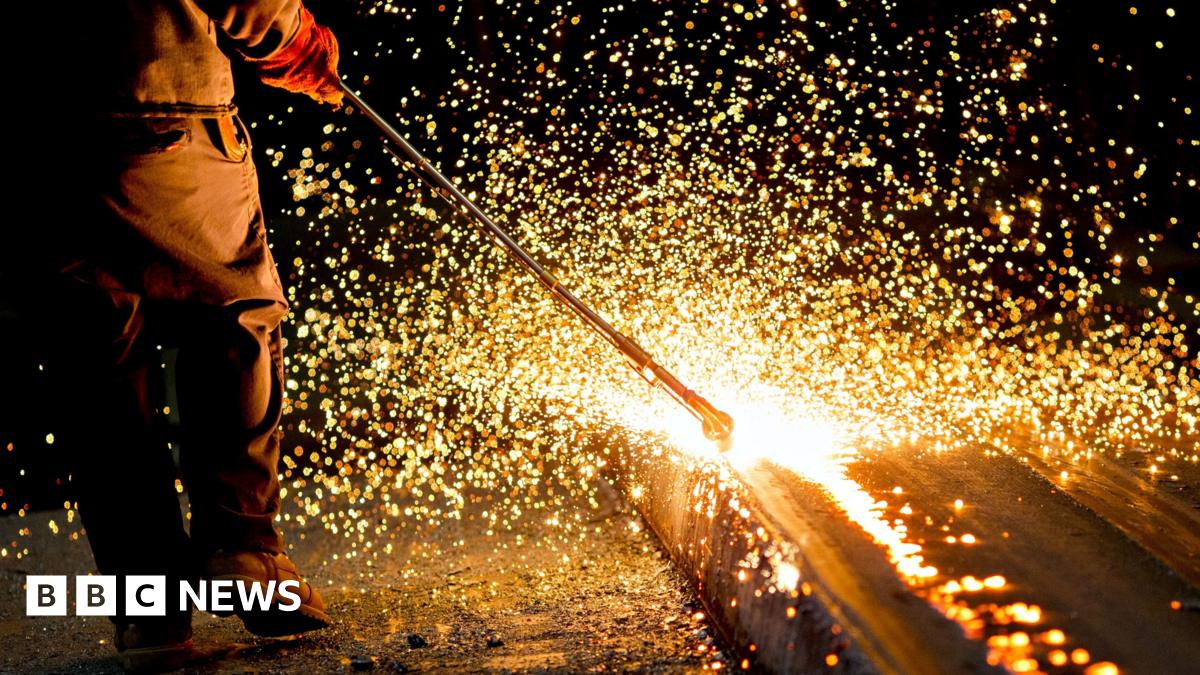US companies are, arguably, at the forefront. Steelmaking in the US is already greener than in many countries, thanks to the popularity of electric arc furnaces, external there. These furnaces use electricity, not heat from burning fossil fuels, to melt scrap steel – for example – and recycle it.
Plus, a handful of emerging start-ups such as Boston Metal say they can go one better and use electricity for the iron-making process, a crucial step in making brand new, or virgin, steel.
However, the Trump administration has taken a less than enthusiastic stance towards renewable energy and decarbonisation projects. It remains to be seen whether these new start-ups will make a big, molten splash in the steel industry any time soon.
Switching from traditional blast furnaces to electric arc furnaces can lower carbon emissions per tonne, external of steel produced from 2.32 tonnes of CO2 to 0.67 tonnes of CO2.
For iron-making, some plants could use green hydrogen – made using electricity from 100% renewable sources – says Simon Nicholas, lead steel analyst at the Institute for Energy Economics and Financial Analysis.
But switching iron and steel-making plants over to green hydrogen hasn’t gone as smoothly as some had expected.
In June, Cleveland-Cliffs, a major US steel producer, appeared to back away, external from its plans to build a $500m (£375m) hydrogen-powered steel plant in Ohio. The BBC has contacted Cleveland-Cliffs for comment.
“We’re seeing projects cancelled, proponents pulling out of projects all over the place,” says Mr Nicholas, of green hydrogen initiatives, specifically.
